MARCH 9, 2025: According to my trip plan, today we were to visit Mount Etna. The morning was very cloudy, but the forecast predicted partly cloudy skies in the afternoon, so we were hopeful that by the time we arrived, the sun would break through, offering us a clear view. Man plans, and God laughs.
Mount Etna, the highest and most active volcano in Europe, stands at approximately 3,357 meters (11,014 feet) above sea level, though its height fluctuates due to frequent eruptions. It has been erupting for hundreds of thousands of years, with the most recent eruption occurring less than a month ago.
On a clear day, Mount Etna is visible from Taormina, but since our arrival, the weather has been dismal and overcast. Aside from a fleeting glimpse from the plane, we have yet to see it.
There are several ways to visit Mount Etna, depending on how close you want to get to the summit. For a self-guided visit, the cable car on the south side takes you up to 2,500 meters. Beyond that, a licensed guide is required to go any higher. Since 2,500 meters seemed high enough for us, our plan was to drive to Rifugio Sapienza (1,900m) and take the 15-minute cable car to the upper station from there.
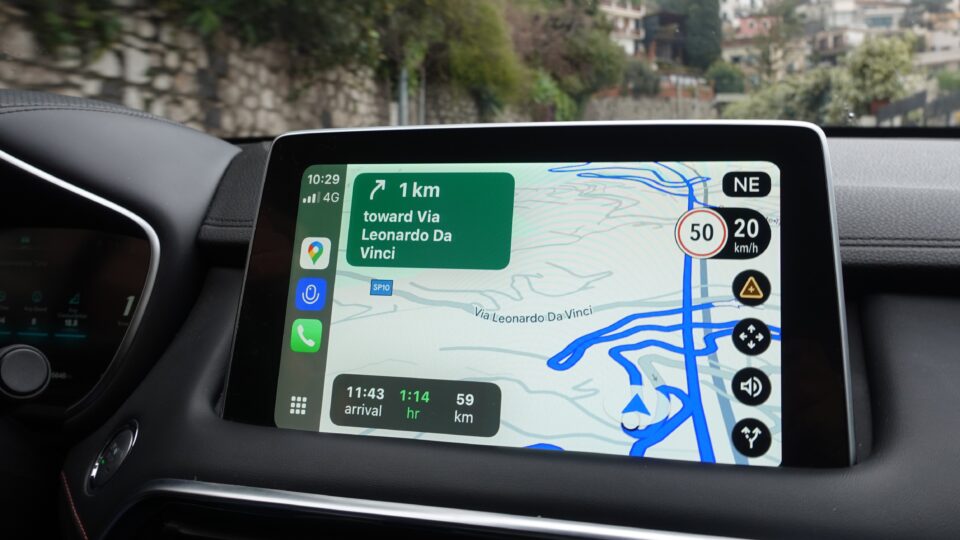
The weather did not cooperate. Shortly after leaving our apartment, the rain began. We drove about half an hour south on the highway before starting the ascent up the mountain. At its base, we passed through some small towns, eerily quiet and deserted. Was it the rain keeping everyone indoors, or was it simply the stillness of a Sunday morning?
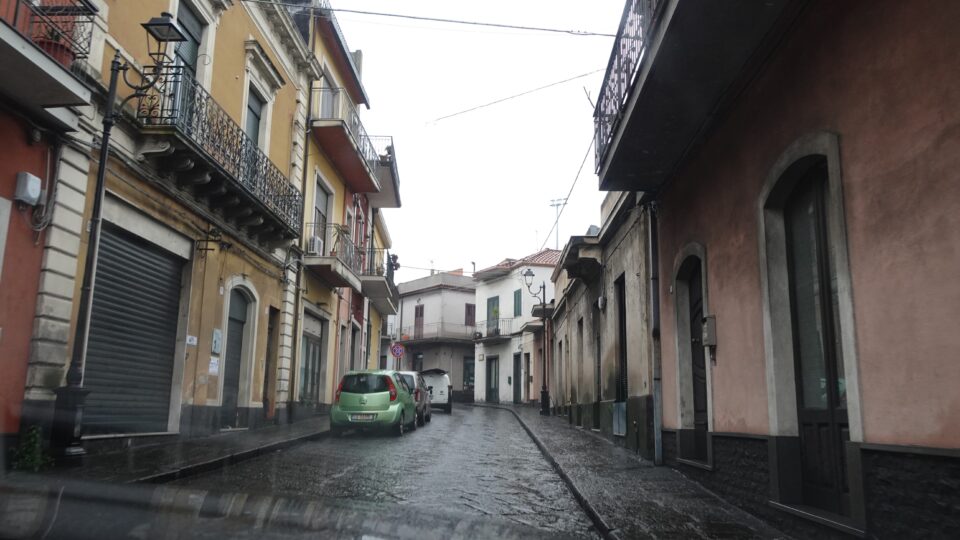
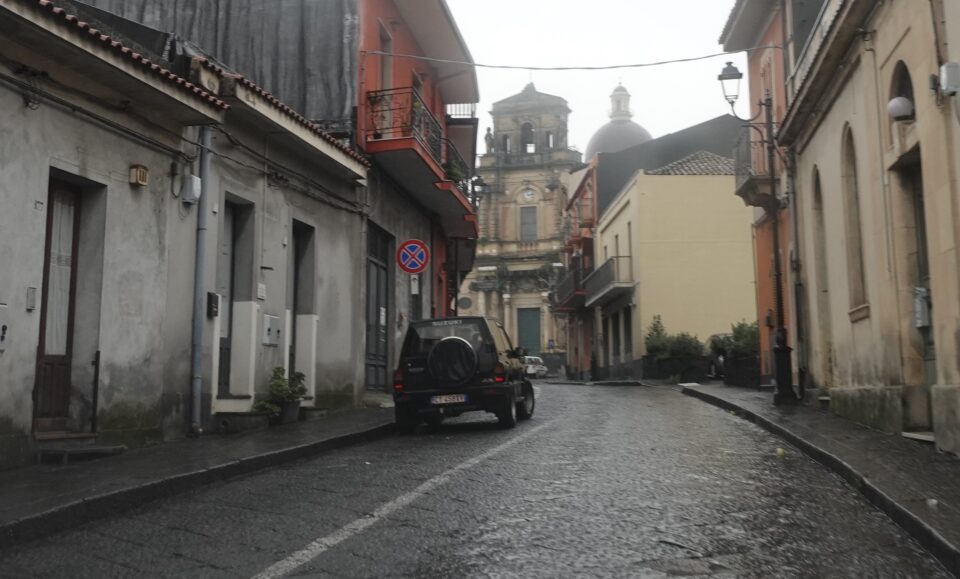
We passed the last village and continued our ascent, but visibility remained poor. As we climbed higher, the landscape changed – trees became sparse until they disappeared entirely, replaced by massive black boulders and stretches of dark lava soil. The further we went, the worse the conditions became. Fog thickened, reducing visibility to barely 50 meters. We had to drive slowly with our lights on, navigating cautiously.
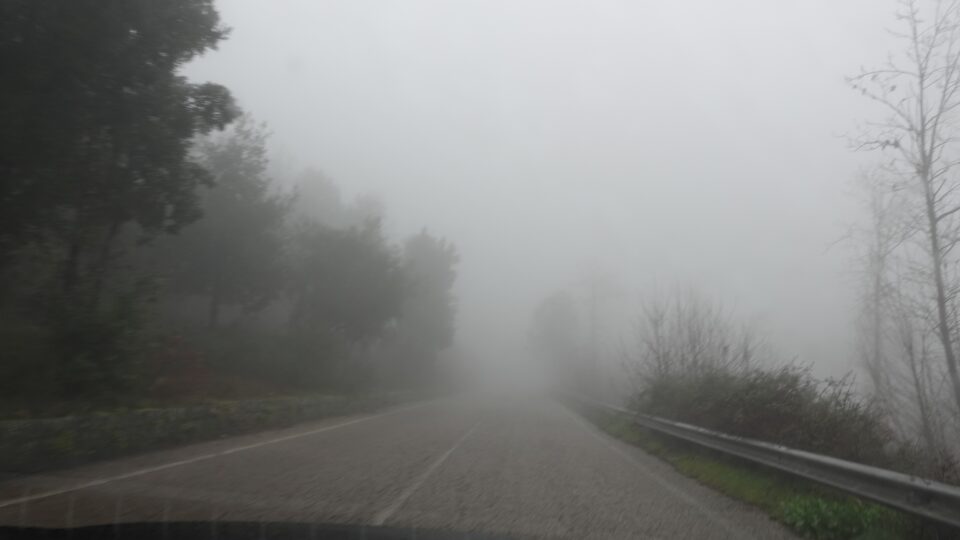
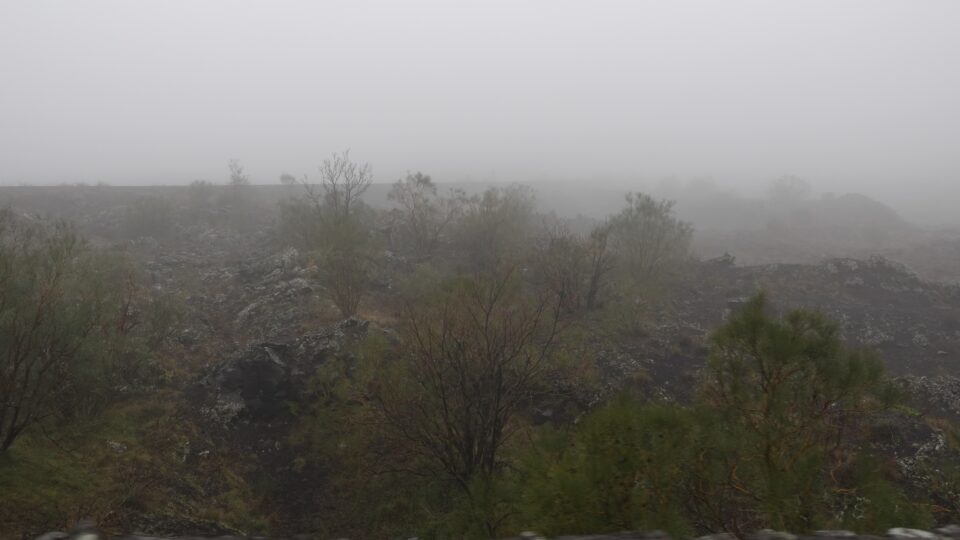
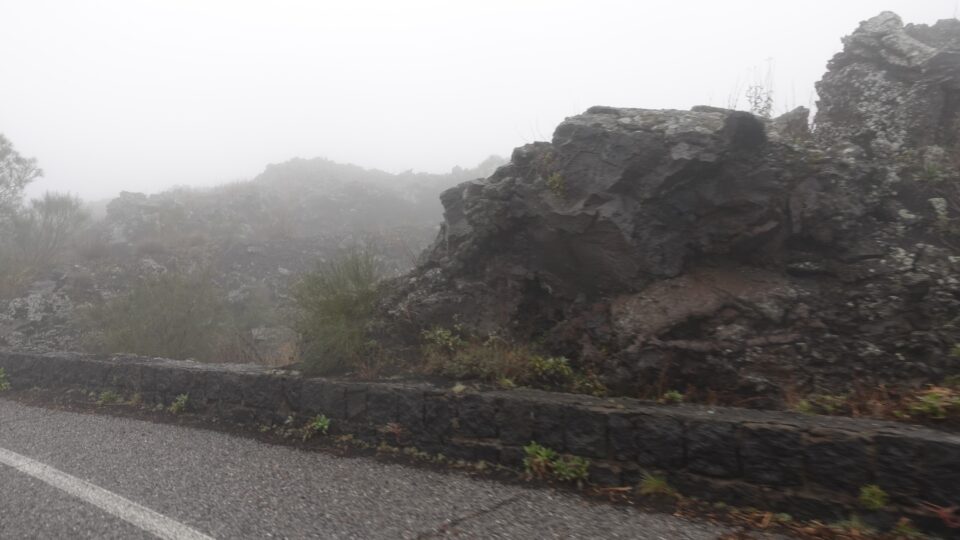
We drove past a spot with parked cars and noticed a group of people descending into a cave—one of the many lava tunnels formed by past eruptions. These tunnels form when the outer layer of a lava flow cools and solidifies while molten lava continues to flow beneath. Once the eruption ceases and the remaining lava drains away, a hollow tunnel is left behind. Mount Etna has dozens of these tunnels scattered across its slopes and surrounding areas.
When we were just about two kilometers from the cable car, we started noticing patches of snow along the road. At first, they were small, but as we climbed higher, there was more and more snow, and the fog became heavier. Driving became increasingly difficult, and by the time we reached the cable car station, visibility was so poor that we could barely distinguish the road ahead—let alone spot the cable car itself.
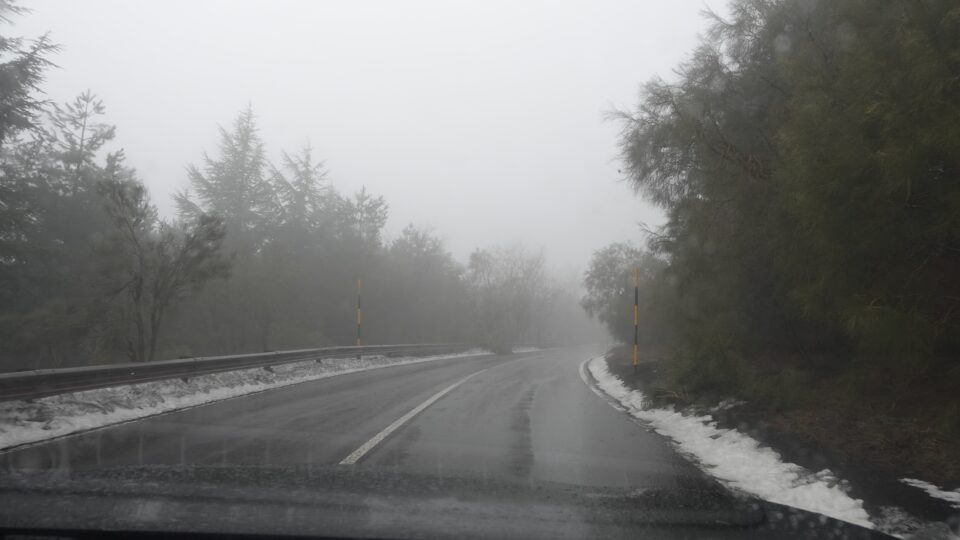
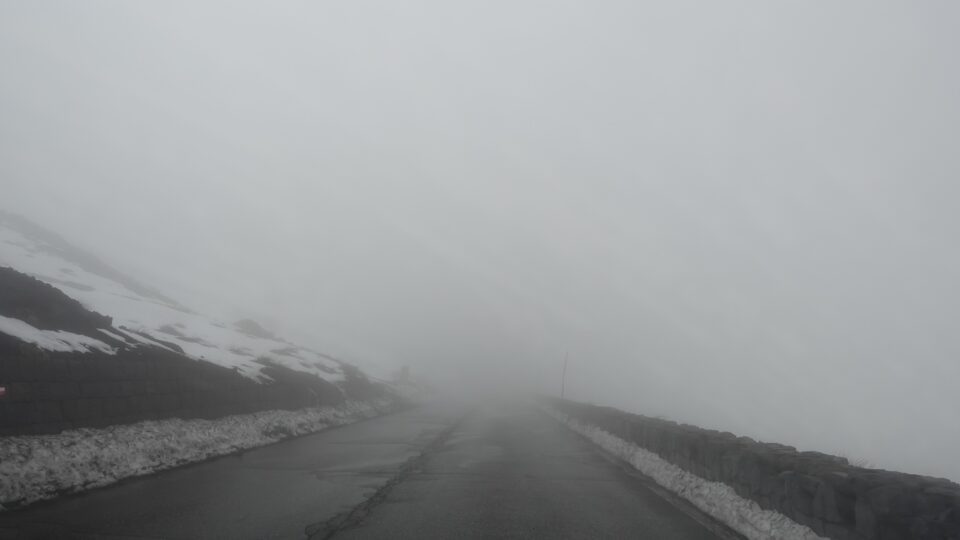
Surprisingly, the area was filled with parked cars. Police were directing drivers where to park, as the snow and fog obscured all road markings. Despite the cold, some people were outside playing in the snow, while others were inside the nearby restaurants and shops. Neither option appealed to us. Taking the cable car with zero visibility seemed pointless, and continuing along the road to Mount Etna’s northern slope was out of the question due to the hazardous driving conditions. With no good alternatives, we decided to turn around and head back home.
We chose a different route down rather than retracing our way back. At one point, the fog lifted, revealing the stark black landscape shaped by volcanic eruptions.

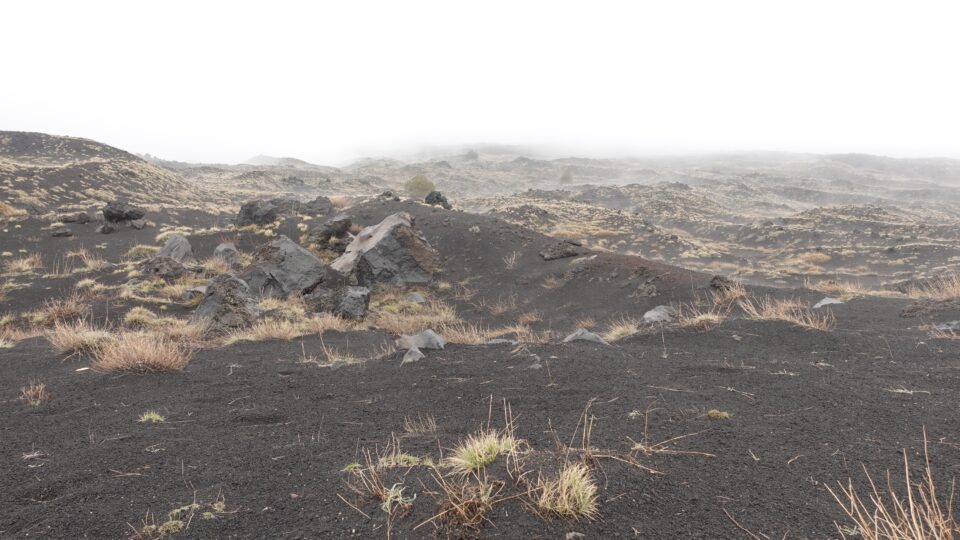
Before heading home, we made a stop in Naxos, a coastal town with a large supermarket. After grocery shopping, we took a scenic coastal road back to Taormina, enjoying the beautiful views along the way.

Visiting Mount Etna, or to be exact, not visiting it, took less time than we had planned. With the rain stopped and the weather slightly improving, we decided to head to Castelmola, a small, charming hilltop village above Taormina. However, as we ascended the mountain, the visibility worsened. By the time we reached the parking lot on the outskirts of the village, we found ourselves engulfed in thick fog, with no views of the coast below.
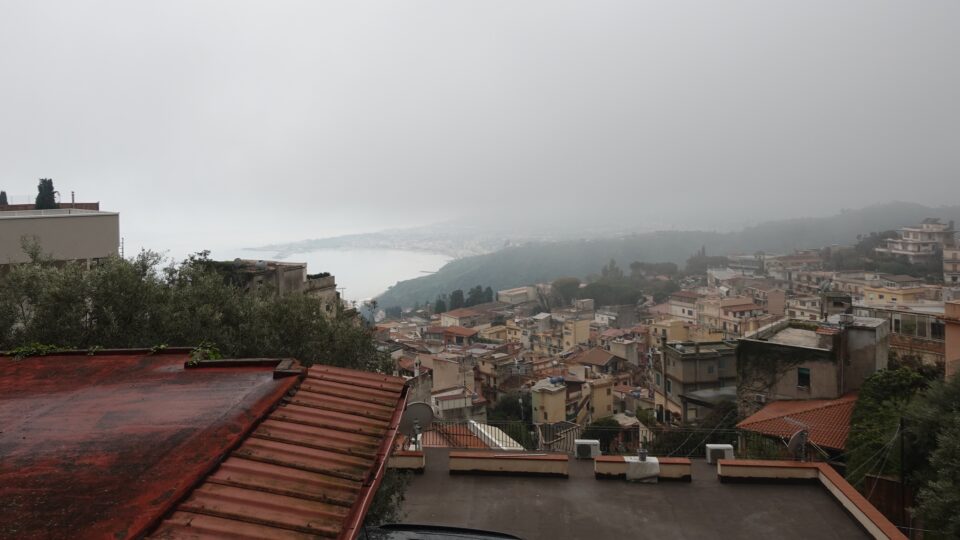
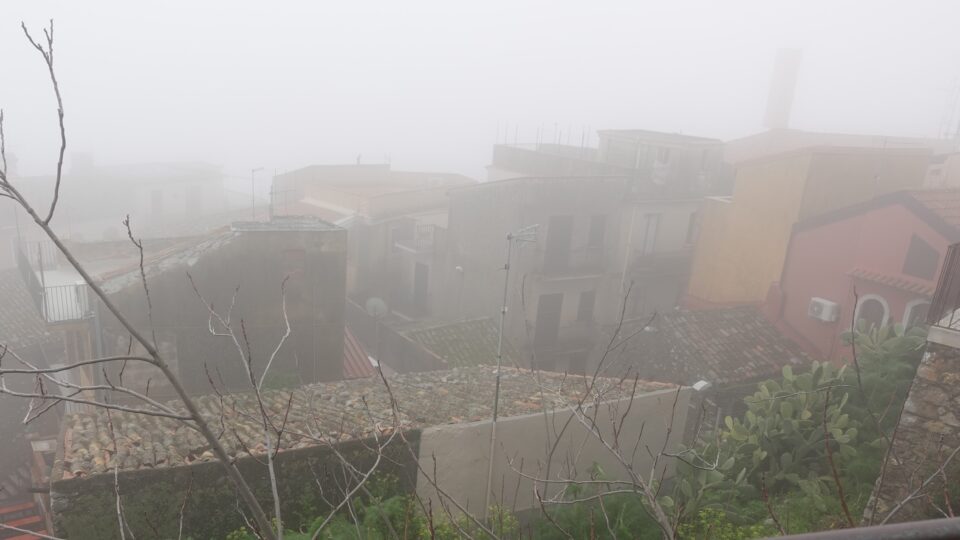
It would have been nice to see the view, but we were here to find the Church of Saint Nicholas of Bari. The bell tower of this church has windows on three sides with Stars of David in them. Was there ever a Jewish community here? Since the bell tower seems a later addition, was it in homage to the building that might have once been a synagogue? Or was it a superstitious belief to keep small vestiges of the past to guard against retribution. Who knows?
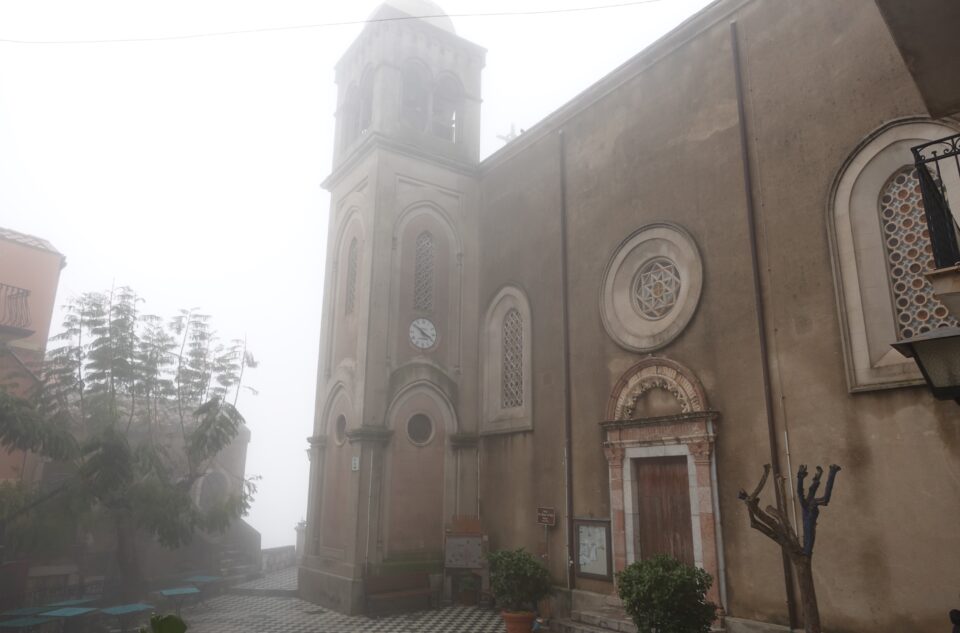
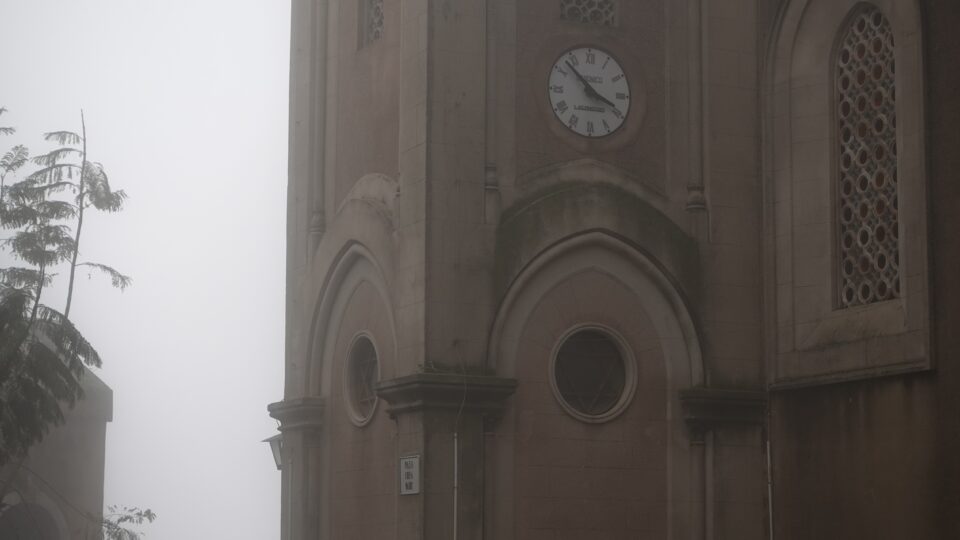
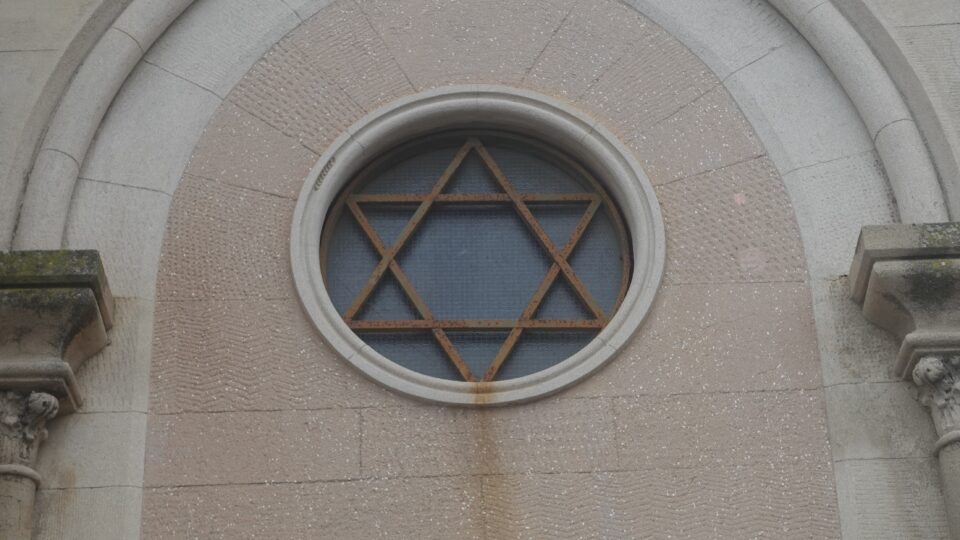
After Castelmola, we returned to our apartment and called it a day. A cloudy day.
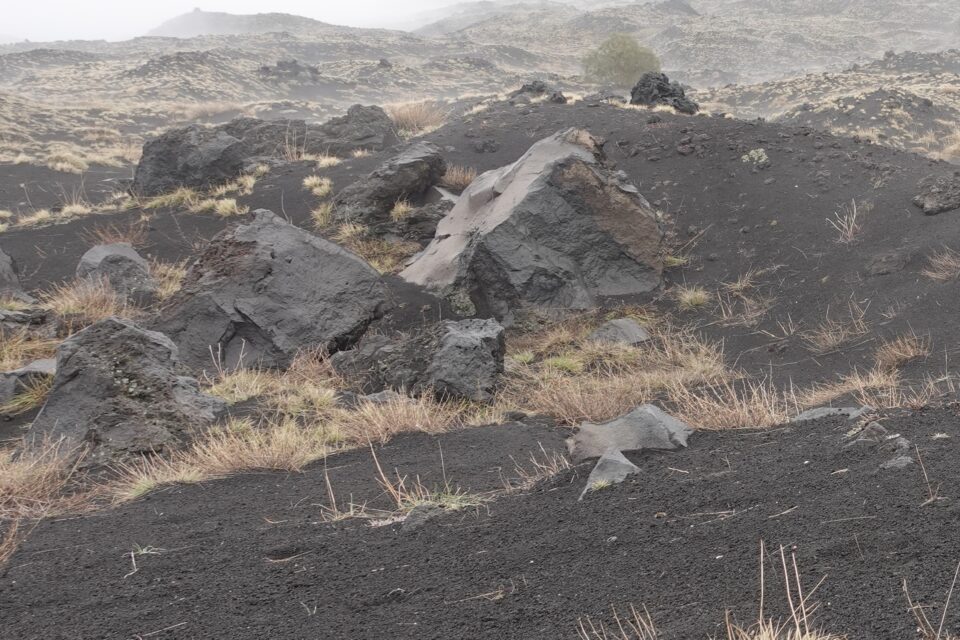
I never quite appreciated how clear the weather is here (usually!). OMG summer in Etna!